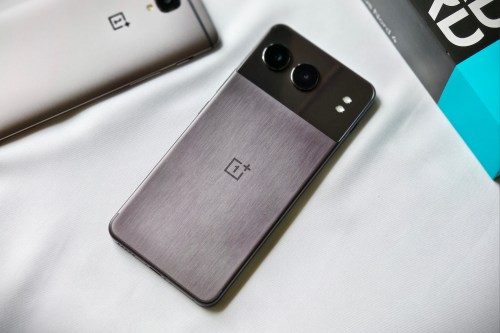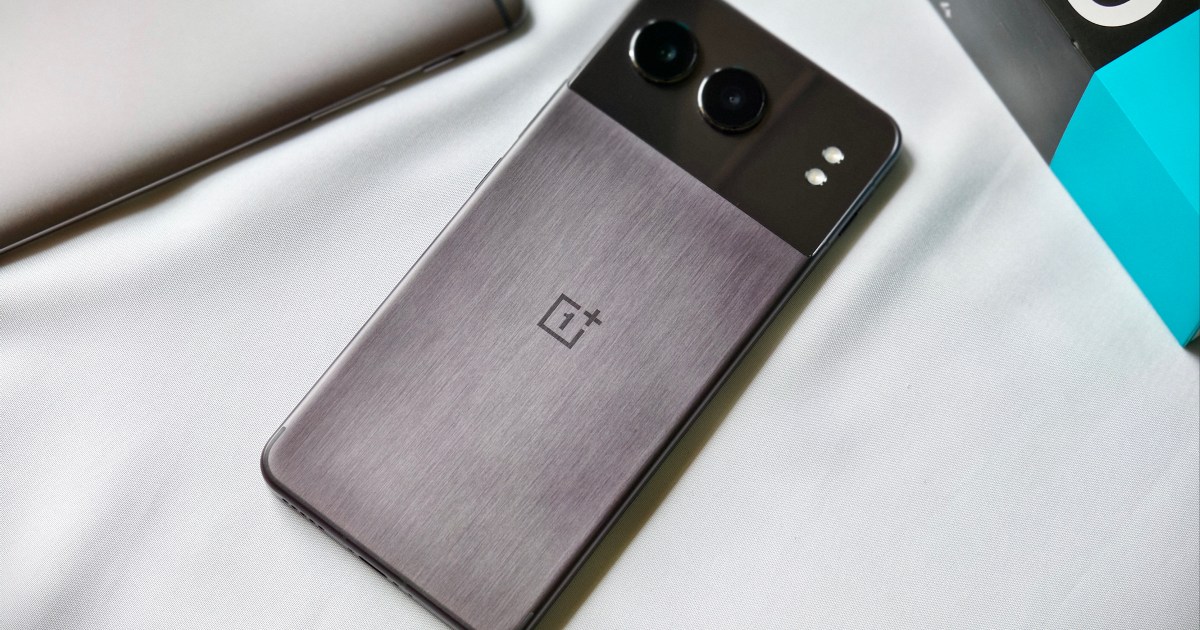
Phone companies are constantly vying for the limelight, and excellent designs continue to be at the center of that quest. OnePlus, which has previously toyed with unusual yet fascinating concepts, is now reviving the use of metal in phone design. The OnePlus Nord 4 is launching on July 16, and the company has already started announcing the next release.
We’ve already given you a preview of the upcoming metal-backed OnePlus Nord 4 , while we’ll save our final review for its announcement next week. But ahead of the launch, I spoke to OnePlus President and COO Kinder Liu about the exciting aspects of the new design and the company’s commitment to what it claims is “best-ever fluidity” on its devices to date.
Let’s talk about that design first
Our conversation started with the design, which brings back a big dose of nostalgia. Phones with metal bodies dominated the second half of the 2010s, but were eventually phased out in favor of glass or plastic bodies, leaving enthusiasts like me quite unsatisfied.
I asked what led to the choice of material. Liu told me that the path back to metal was primarily inspired by four qualities it brings, namely “durability, beauty, permanence, and strength.” Understandably, metal phones don’t succumb as quickly to hard drops and are harder to break. While the beauty of a refined metal surface may be subjective—and rightly so—it’s undeniably more resistant to the effects of time, such as micro-scratches that develop on glass phones after constant use.
Metal also improves performance, with the exterior acting as an effective surface for dissipating heat generated during tasks like gaming. While that may mean your phone will likely feel hotter while you’re using it, it also cools down faster than most phones with glass backs. By preventing heat from being trapped inside the casing, it also prevents damage to internal components over long periods of use.
So, what led to the demise of metal phones and the dominance of glass as the material of choice for premium phones? I asked Liu, who responded: “Metal phones were all the rage before 5G networks. But as 5G became more popular, smartphones needed more antennas.” Compared to just four antennas on the OnePlus 3T, the OnePlus 12 has over 13.
The increased number of antennas creates challenges in fitting more of them into the body. Meanwhile, metal bodies would interfere with the combined signals of these antennas, so companies began to favor glass or plastic, while limiting the use of metal to the side rails.
This got me curious about what changes now and how OnePlus managed to achieve a metal construction without impacting 5G signals. Liu told me about revised antennas that are now 50% smaller than before. More importantly, OnePlus redesigned the motherboard and strategically placed these antennas so that the Nord 4’s body doesn’t obstruct cellular signals. Additionally, the phone has plastic inserts in areas like the bottom of the back to boost signal strength.
In addition to ensuring signal strength, OnePlus also engineered a metal design with microscopic ridges that resemble bumps but result in a flat surface. That’s something glass often suffers from, even on the most premium phones and despite the strongest Gorilla Glass — or similarly strong — protective layers.
A new record for OnePlus software updates
But the OnePlus Nord 4 is about more than just a design change focused on durability. The software plays a crucial role, too. It even comes with the promise of OnePlus’ “longest software support package ever.”
Liu confirmed that the OnePlus Nord 4 will get four years of Android updates, starting with Android 14 and ending with Android 18 (or equivalent). Additionally, OnePlus will provide two additional years of software support for critical feature updates, including security patches. That brings the total support to six years, which is longer than any OnePlus phone in the past. This is a step up from the OnePlus Nord 3, which was promised three years of Android updates and an additional year for security updates.
This is in line with other mid-range devices, like the Samsung Galaxy A55, which also promises five years of total software support, including four Android updates. The only mid-range Android phone to top this is the Google Pixel 8a, for which Google reserves a seven-year update window.
Extensive testing to support strong claims
I asked if other OnePlus phones, particularly previously launched flagships like the OnePlus 12, would get the same treatment. Unfortunately, I didn’t get a concrete answer.
Instead, our conversation turned to Liu reiterating that it’s not just about bold promises about how many years a phone will receive updates. I was told that the phone should “stay fast and smooth for a long time, and that the battery [should] Also [be] “I’m in it for the long term.”
To ensure all goes according to plan, OnePlus enlisted German testing agency TÜV SÜD to run a 72-month fluidity test, which the company says it passed with flying colors. The test simulates extensive and labor-intensive testing, copying and deleting dozens of gigabits of files in rapid succession to tax storage, installing and uninstalling hundreds of apps, and launching and closing multiple apps while timing their launches.
The test confirms that after 72 months (six years) of use, the OnePlus Nord 4 is still as fluid as it was on day one. What’s more, the battery has been repeatedly charged and drained to ensure its longevity. OnePlus found that the battery remained in top condition despite 1,600 charge cycles.
These guarantees should create a sense of peace for buyers. Toward the end of our conversation, Liu noted that a phone without these guarantees is “like a strong house without a strong foundation. It looks good on the surface, but you don’t really want to live with it.”
